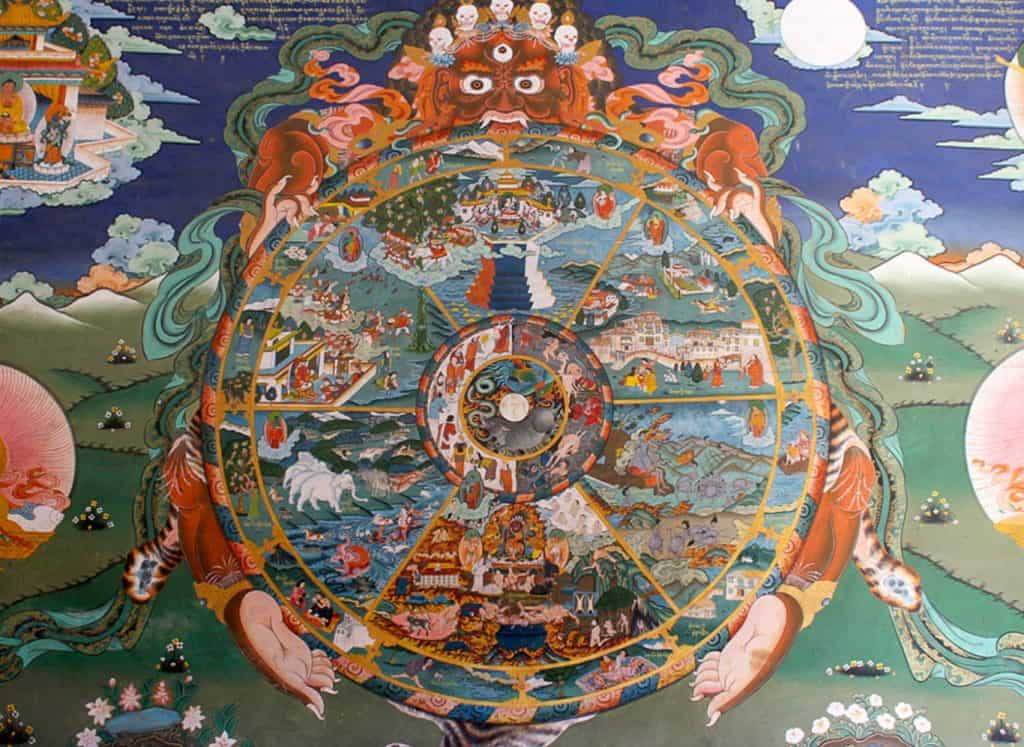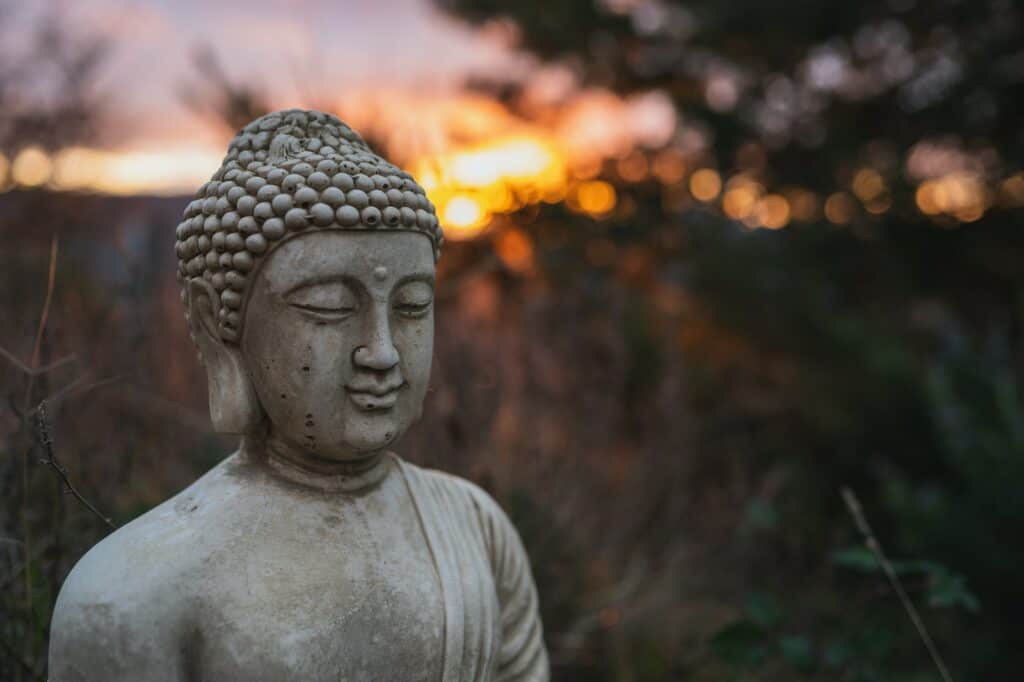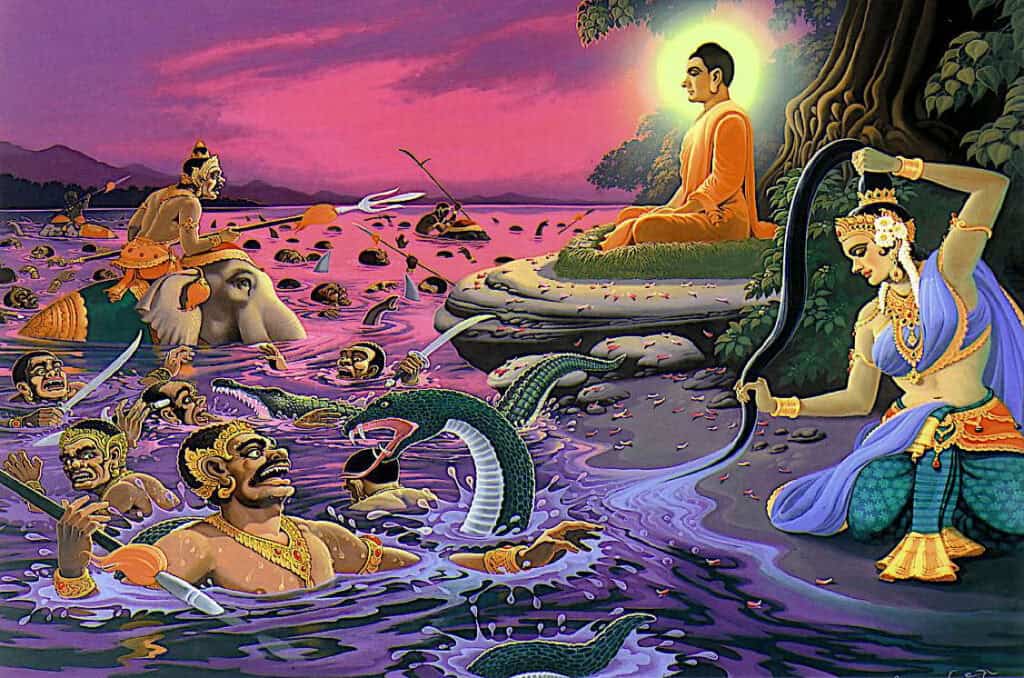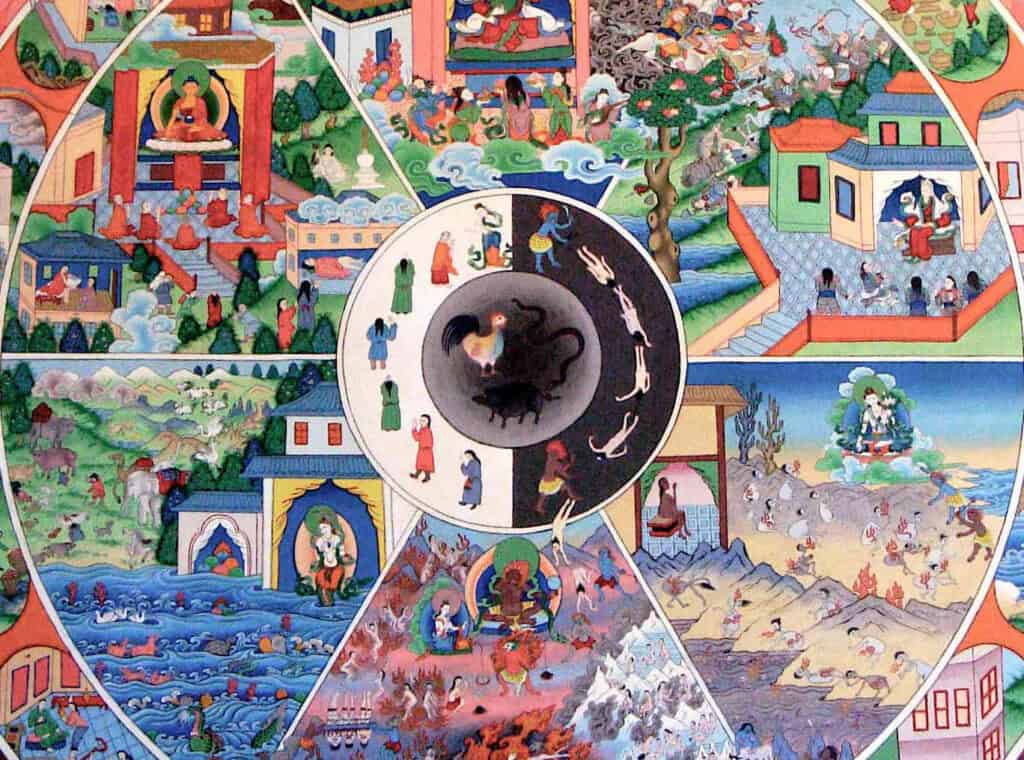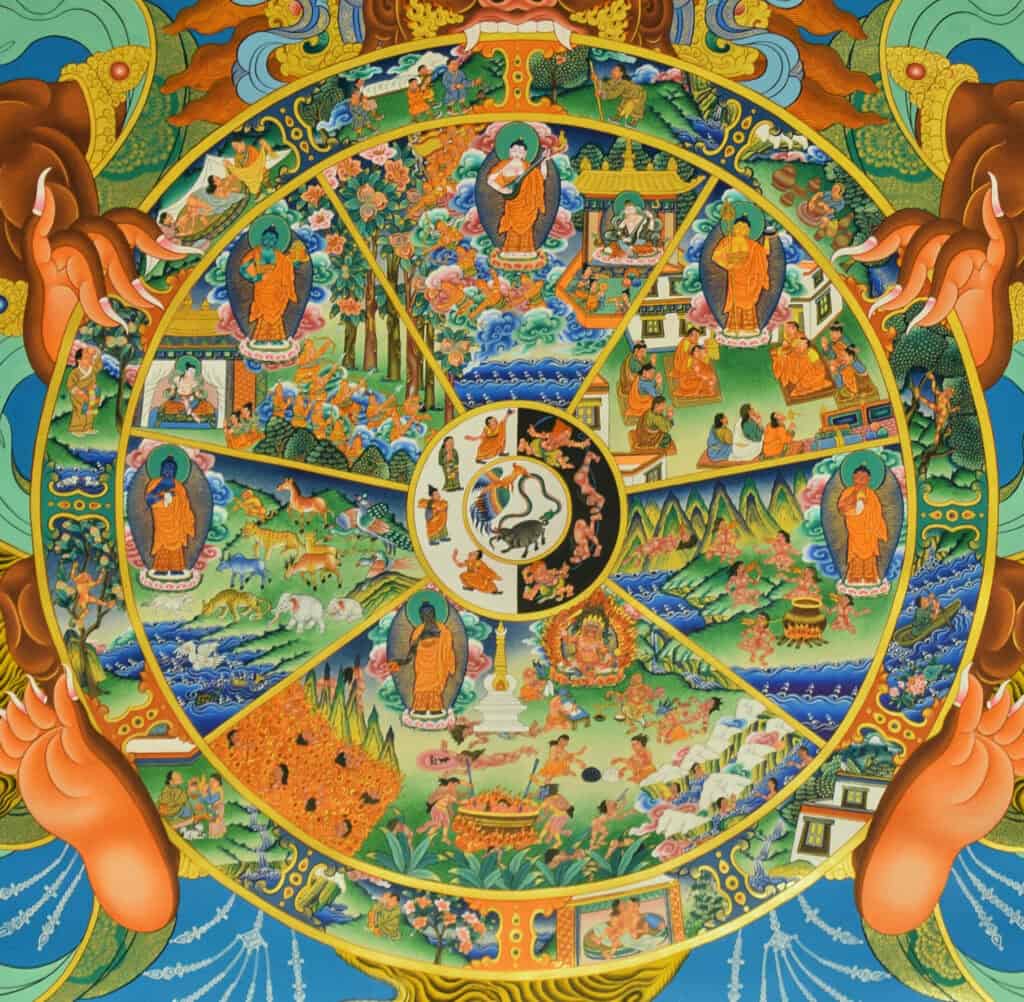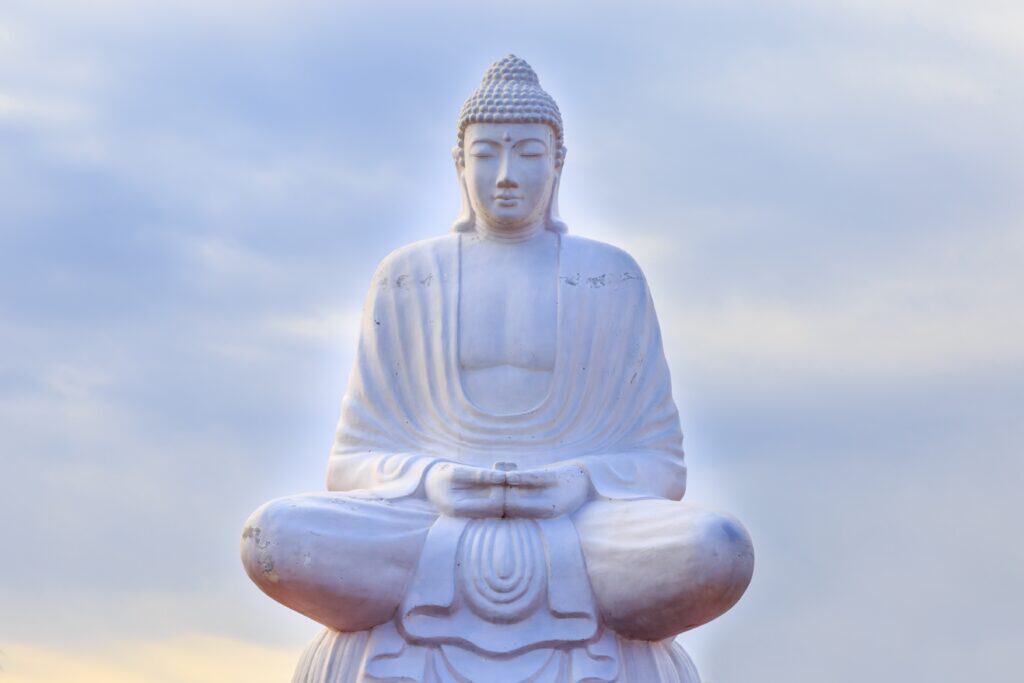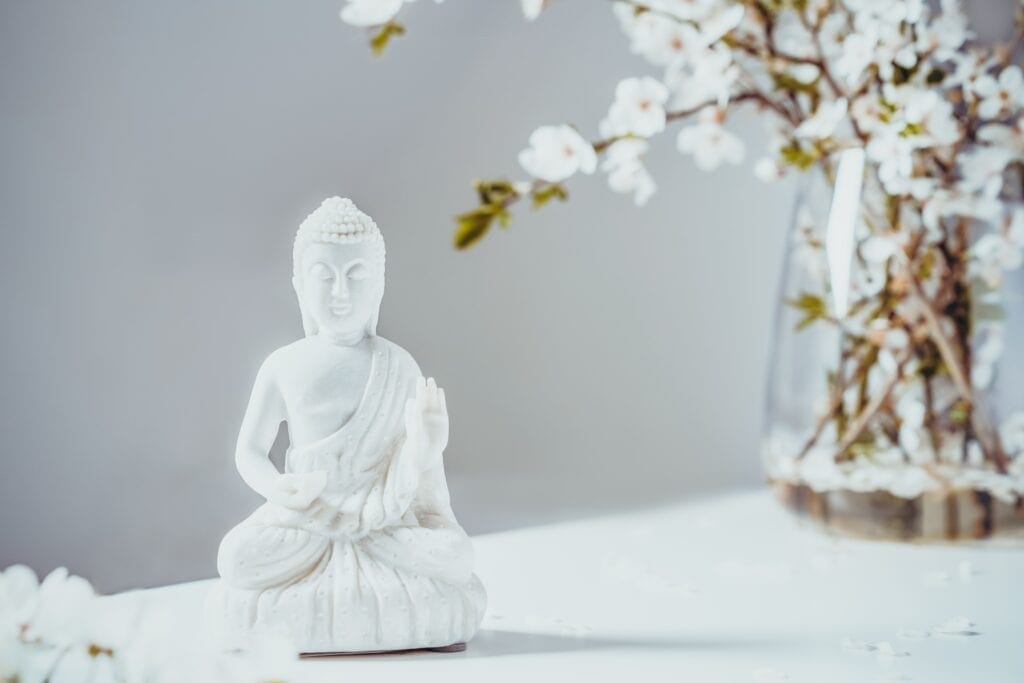The Buddhist Wheel of Life, also known as the Bhavacakra, is a visual representation of the cycle of birth, death, and rebirth in Buddhism.
Understanding the Buddhist Wheel of Life is essential to understanding Buddhist philosophy. The wheel is a powerful symbol that represents the complex interplay of karma, rebirth, and suffering. By studying the wheel, practitioners can gain insight into the nature of existence and the path to liberation.
The Wheel of Life is a rich and complex symbol that has been interpreted in many ways over the centuries. Some see it as a warning about the dangers of attachment, while others view it as a roadmap to enlightenment. Regardless of how one interprets the wheel, it remains a powerful tool for understanding the nature of existence and the path to liberation.
Key Takeaways
- The Buddhist Wheel of Life is a visual representation of the cycle of birth, death, and rebirth in Buddhism.
- The wheel is divided into six sections, each representing a different realm of existence, and surrounded by the twelve links of dependent origination.
- Understanding the Wheel of Life is essential to understanding Buddhist philosophy and gaining insight into the nature of existence and the path to liberation.
Understanding the Buddhist Wheel of Life
The wheel is divided into three sections: the outer circle, the hub, and the inner circle. The outer circle represents the twelve links of dependent origination, which are depicted as a series of images. These images illustrate how ignorance leads to suffering and how suffering can be overcome by understanding the nature of reality.
The inner circle of the wheel represents the six realms of existence. These realms are the god realm, the demi-god realm, the human realm, the animal realm, the hungry ghost realm, and the hell realm. Each realm is depicted as a separate section of the circle, and each has its own unique characteristics.
The hub of the wheel represents the three poisons of ignorance, attachment, and aversion. These poisons are the root of all suffering, and they are depicted as a pig, a rooster, and a snake, respectively. The pig represents ignorance, the rooster represents attachment, and the snake represents aversion.
Understanding the Buddhist Wheel of Life is essential to understanding Buddhist teachings on karma and rebirth. According to Buddhist philosophy, all sentient beings are trapped in the cycle of birth, death, and rebirth, and the only way to escape this cycle is to achieve enlightenment.
The wheel is held by Yama, the Lord of Death, who symbolizes impermanence and the inevitability of death. The snake that surrounds the wheel represents the cycle of birth and death, while the moon and sun in the background represent the duality of existence.
By studying the Wheel of Life, one can better understand the nature of suffering and the path to liberation. It is a powerful tool for self-reflection and spiritual growth, and it remains an important symbol of Buddhist philosophy to this day.
The Twelve Links of Dependent Origination
The twelve links are divided into three groups: the past, present, and future. The past group includes ignorance, volitional formations, and consciousness. The present group includes name and form, the six senses, and contact. The future group includes feeling, craving, clinging, becoming, and birth.
Each link is dependent on the previous one, creating a chain of causation. Ignorance leads to volitional formations, which leads to consciousness, and so on. The links are not linear, but rather circular, representing the cyclical nature of existence.
The concept of dependent origination is central to Buddhist philosophy. It teaches that nothing exists independently and all phenomena arise in dependence upon other phenomena. This includes the cycle of birth, death, and rebirth. By understanding the twelve links of dependent origination, one can break free from the cycle of suffering and attain enlightenment.
The Six Realms of Existence
The inner circle depicts six realms of existence, each representing a different state of being. These realms are transitory and are determined by karma, the consequences of one’s actions. These can be considered not only as physical realms that we can be born into but also as mental states that our mind can “take birth” into from moment to moment.
A brief summary of the six realms are below:
The God Realm
The God Realm is the realm of divine beings. These beings experience great pleasure and luxury, but their existence is characterized by complacency and a lack of motivation to progress spiritually. They are often depicted as living in a heavenly palace, surrounded by beautiful gardens and enjoying all the pleasures of life.
The Jealous God Realm
The Jealous God Realm is the realm of the demigods. These beings are constantly fighting with each other over resources, power, and status. They are consumed by jealousy and envy, and their existence is characterized by constant conflict and struggle.
The Human Realm
The Human Realm is the realm of human beings. This realm is considered the most favorable for spiritual progress, as humans can understand and practice the teachings of the Buddha. However, humans are also subject to suffering, and their existence is characterized by the constant struggle to find happiness and avoid suffering.
The Animal Realm
The Animal Realm is the realm of animals. These beings are subject to instinctual behavior and are often depicted as being driven by their desires and impulses. They lack the ability to understand and practice the teachings of the Buddha.
The Hungry Ghost Realm
The Hungry Ghost Realm is the realm of hungry ghosts. These beings are depicted as having insatiable appetites and are always hungry and thirsty. They are unable to find satisfaction, and their existence is characterized by suffering and dissatisfaction.
The Hell Realm
The Hell Realm is the realm of the hell beings. These beings are subject to intense suffering, both physical and mental. They are often depicted as being tortured by demons or other hell beings. Their existence is characterized by pain and misery.
The Three Poisons
At the center of the wheel are three animals – a pig, a pigeon, and a snake – representing the three poisons of ignorance, attachment, and aversion. These three poisons are considered the root of all suffering and the primary obstacles to enlightenment.
Ignorance
Ignorance, or delusion, is the first of the three poisons. It refers to a lack of understanding of the true nature of reality. In Buddhism, ignorance is seen as the root of all other afflictions. It is believed that overcoming ignorance can attain enlightenment and end the cycle of suffering.
Attachment
Attachment, or desire, is the second of the three poisons. It refers to craving material possessions, sensual pleasures, and even spiritual experiences. Attachment is seen as a major obstacle to spiritual growth because it leads to suffering when our desires are not met. In Buddhism, the goal is to cultivate detachment and let go of our attachment to things that are impermanent.
Aversion
Aversion, or hatred, is the third of the three poisons. It refers to the tendency to push away or reject things that we perceive as unpleasant or undesirable. Aversion can manifest as anger, resentment, or even fear. In Buddhism, the goal is to cultivate compassion and overcome aversion by developing a more positive and accepting attitude toward ourselves and others.
The Wheel of Life in Modern Buddhism
In modern Buddhism, the Wheel of Life remains a powerful symbol of the human condition. It is a reminder that our actions have consequences and that we are responsible for our own suffering and happiness. By understanding the Wheel of Life, Buddhists can gain insight into the nature of reality and the path to liberation.
One way that the Wheel of Life is used in modern Buddhism is through meditation. Practitioners may visualize the Wheel of Life during meditation, reflecting on the different realms of existence and the causes and effects of karma. This can help cultivate mindfulness and compassion and deepen one’s understanding of Buddhist teachings.
Another way that the Wheel of Life is used in modern Buddhism is through art. The Wheel of Life is popular in Buddhist art, with intricate mandalas and paintings depicting the different realms of existence. These artworks serve as a visual reminder of the Buddhist teachings and can inspire contemplation and reflection.
Overall, the Wheel of Life remains a central concept in modern Buddhism, representing the cyclical nature of existence and the importance of ethical behavior and mindfulness in achieving liberation.
Frequently Asked Questions
What is the Bhavacakra?
The Bhavacakra, also known as the Buddhist wheel of life, symbolizes samsara, the cycle of birth, death, and rebirth. It is a visual depiction of the Buddhist teachings on the nature of existence and the causes of suffering.
Who is holding the Wheel of Life?
The Wheel of Life is often depicted being held by Yama, the Lord of Death. This signifies the impermanence of life and the inevitability of death.
How does the Buddhist wheel of life relate to the concept of samsara?
The Buddhist wheel of life is a visual representation of the concept of samsara, the cycle of birth, death, and rebirth. It shows how our actions and intentions lead to karmic consequences that determine our future rebirths.

